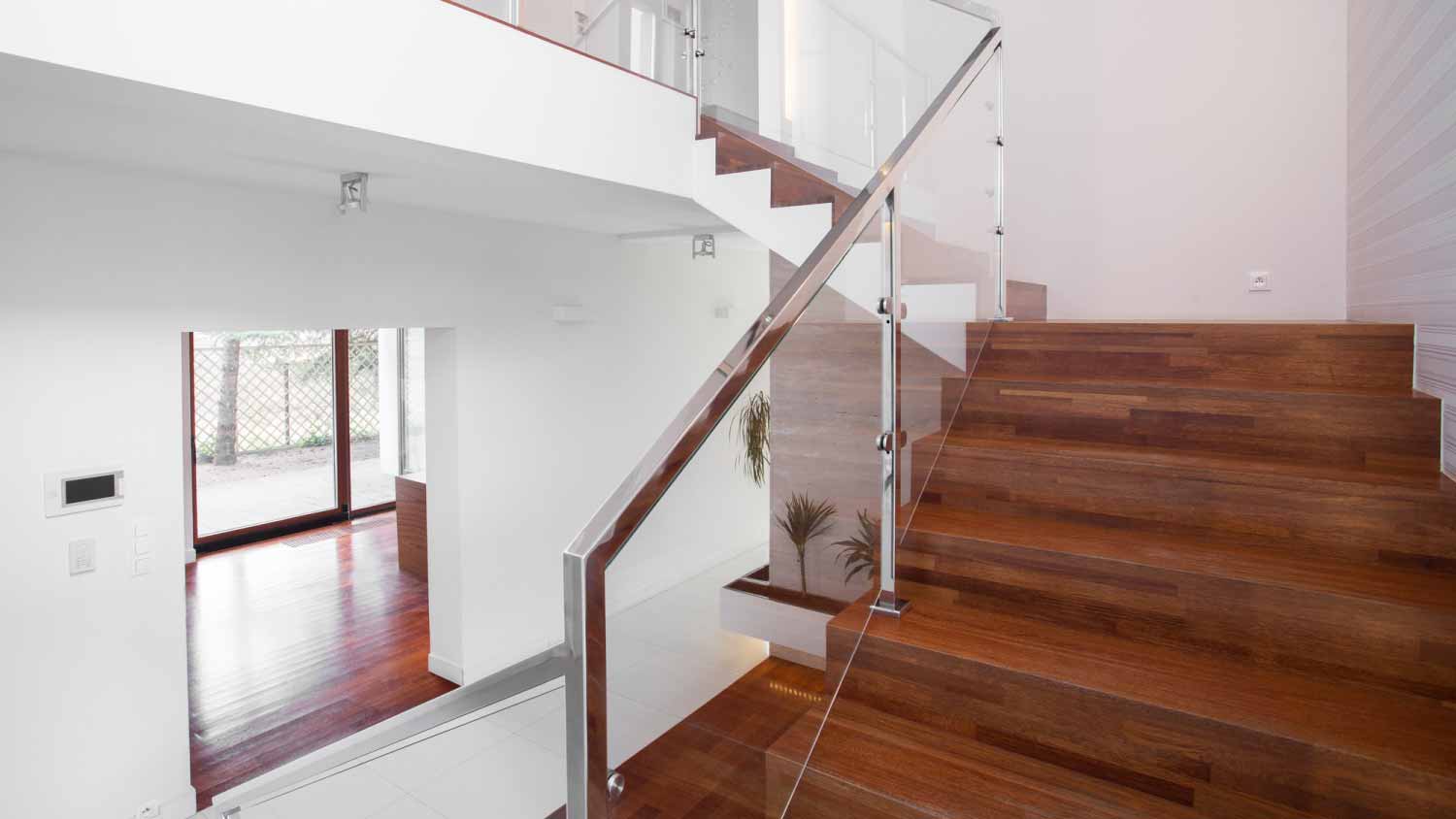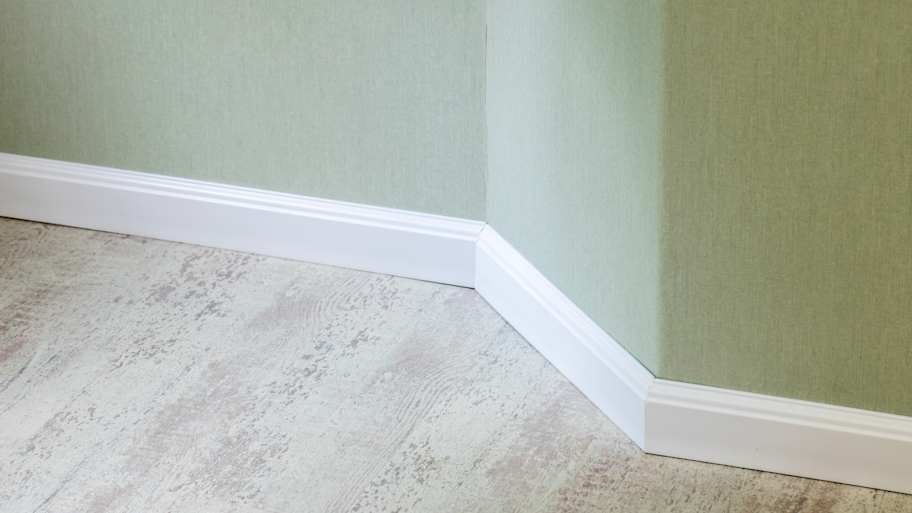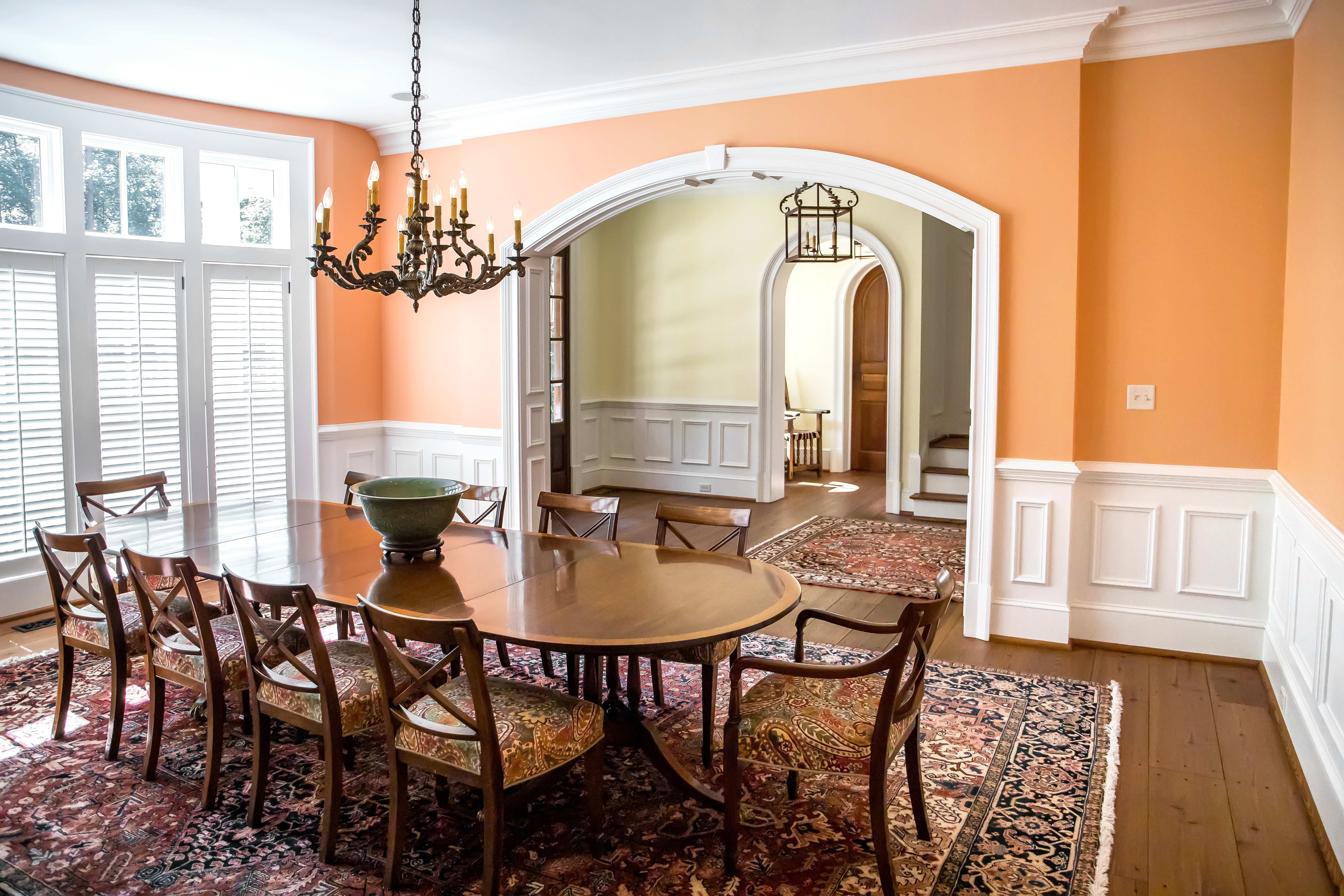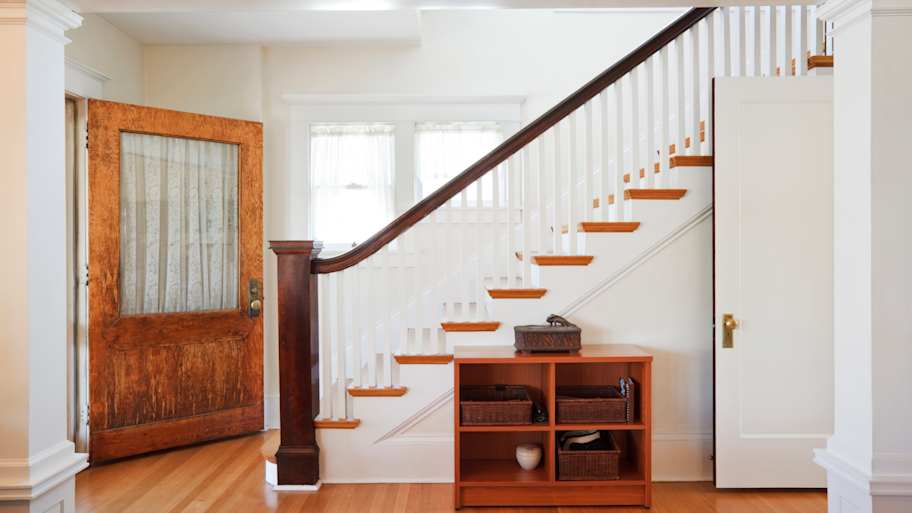
Discover the cost to install a stair railing, including average prices, key cost factors, and tips to save on your project.
The average glass railing cost is $7,000. While most homeowners spend between $4,000 and $10,000, an installation pro can help determine the best options for you regarding style and prices.


On average, you can expect to pay between $200 and $500 per linear foot for your glass railing purchase and installation.
The size, complexity, and materials you choose will affect the overall cost of your installation.
Some homeowners experience an ROI value of up to 75% for glass railings.
Installing a glass railing costs $7,000 on average but can range anywhere from $3,000 on the low end to upwards of $20,000. Whether you’re glass railing is for a landing, a deck, or a staircase, the most prominent pricing factors are its size and your material choices. Besides beauty and function, glass railings have the added benefit of a positive return on your investment.

Because virtually all glass railing installations vary in length to meet the needs of individual homes, the best metric for discussing price is by the linear foot. A glass railing costs $200 to $500 per linear foot on average. Additionally, while any new railing installation will need to meet standard railing height code, expect your cost to increase if you choose to install particularly tall railings for all or part of the project.
| Railing Length (Linear Feet) | Average Cost Range |
|---|---|
| 10 | $2,000–$5,000 |
| 20 | $4,000–$10,000 |
| 30 | $6,000–$15,000 |
| 50 | $10,000–$25,000 |
As with any indoor or outdoor deck railing installation cost, the material used will significantly impact the linear-foot cost and the total project price. Depending on your contractor's availability, you can choose from several glass railing materials.
Plexiglass is a lightweight material that mimics glass. It's less durable than glass, inexpensive, and uncommon for use where longevity is necessary.
Tempered glass is the most common choice for residential railing applications. It balances cost considerations with safety and durability.
Laminated glass is unusual for residential installations due to its high cost, but it's not unheard of. It offers extra safety by not falling apart if it breaks.
Frosted or styled glass offers privacy or elegance and comes with a slightly higher price tag than plain glass.
| Material | Average Cost (Linear Foot) |
|---|---|
| Plexiglass | $150 |
| Tempered | $330 |
| Laminated | $500 |
| Styled | $350 |
Besides the basic costs, several other factors come into play when determining the project's total invoice amount. Your contractor will include most of these factors in your estimate. However, knowing the cost of each one can help you make informed decisions during the planning stage.
Just as there are many deck railing ideas when building an outdoor space, you'll have several options regarding the hardware when installing your glass railing, indoors or out. While most installations include aluminum hardware and handrails, wood and composites are other favorites. Cost relates mainly to the intricacy of the design and the durability of the product you choose.
Your contractor will include the cost of labor in your project estimate. However, it's essential to know that labor charges make up between 20% and 50% of the total cost. Having a more complex design or dealing with access issues can increase the total bid cost when additional hours are necessary for proper installation.
If you're making layout changes inside your home or outdoors, you're likely to encounter additional labor costs as well. Here are some common ones for glass railing installations.
Interior design: $2,060–$15,215
Landscape design: $1,930–$7,250
Landscaper: $1,250–$6,280
Stair contractor: $950–$3,245
Electrician: $165–$535
In most cases, your municipality will need to inspect and approve any new railing installation inside or outside your home. For this to happen, your contractor will need to pull a building permit. Municipalities often figure your permit cost as a percentage of the overall job cost. You can expect a price range of between $150 and $2,000.
The cost of removing and disposing of anything in the way of your new glass railing will add to the total on your invoice. This prep work, as well as getting the site ready for the installation, will be part of your contractor's invoice and will vary widely in both labor and materials, based on your unique situation.
Installing a glass handrail is often just one part of a more significant remodel or rebuild. However, even if you're just replacing or installing one, some additional work may still be necessary to tie everything together.
Trimwork costs: $635–$2,250
Flooring costs: $1,530–$4,860
Painting costs: $1,000–$4,200
The complexity of your glass railing installation will affect both material and labor costs. Complex layouts can require custom-made components that will cost up to 50% more than off-the-shelf ones.
Additionally, labor costs can increase if the installation location is difficult to access with normal equipment. Expect to spend more on glass stair railing sections than on straight and flat runs.
You can purchase and install your own glass railing and components as a DIY project. Doing so could reduce the cost of the job by up to 50%. However, the task involves having specialized knowledge and a long list of do's and don'ts to ensure everything meets building code and is safe for use.
Because of these issues, most homeowners simply leave it to the pros and hire a local stair-installation professional for the work. Professional installation not only reduces frustration and saves time but also comes with a warranty to help protect your investment.
Because a glass railing system consists of multiple components instead of single long pieces, repairing your existing glass railing is a viable option in many cases. Minor glass repair is even possible in some situations.
If you have an existing glass railing that could use a refresh, you can consider swapping the glass panes or some hardware parts for a whole new look. Doing so can save some money in terms of not having to start from scratch.
However, because of the nature of glass railings, the repaired installation will have to meet any new building code regulations. You may be better off replacing the system than trying to bring an old one up to code. This is a situation where talking to your contractor about options makes sense.
In any case, consider factors like the age of the existing system, the extent of any damage, and if you have any warranty left on the old one when deciding.
| Factor | Repair | Replace |
|---|---|---|
| Cost of Repairs vs. New System | Repair cost is under 30% of replacement | Repair cost exceeds 50% of replacement |
| Age of Railing | Less than 10-15 years old | Over 20-25 years old |
| Hardware Condition | A few damaged elements | Many damaged, rotted, or missing elements |
| Glass Condition | A few minor scratches or chips | Widespread damage |
While installing a glass railing inside or outside your home carries a significant price tag, it also comes with a relatively high return on your investment. Homeowners often see ROIs of 75% when it comes time to sell the house.
The modern look and appeal of glass railings is also a significant selling point. However, that's only if the contemporary look fits the home's aesthetics.
Keep in mind that glass railings tend to show fingerprints and smudges and need regular cleaning to keep them looking good. This can also be a potential turn-off for some buyers.
While the cost to install glass railings can be significant, depending on your design choices and the layout of your project, there are a few ways you can control some of the associated costs. Discuss these with your contractor first, to make sure the extra effort is worth it.
Combine your stair rail installation with a bigger project, such as a room or home remodel.
Do some of the prep work yourself, such as demolition and clearing out the space.
If you have some DIY skills and extra time, you can handle the disposal part of the prep work and finishing.
Choose more budget-friendly glass materials, such as skipping the frosted or etched glass if it's not necessary.
Home is the most important place on earth, which is why Angi has helped more than 150 million homeowners transform their houses into homes they adore. To help homeowners with their next project, Angi provides readers with the most accurate cost data and upholds strict editorial standards. We extensively research project costs to develop the pricing data you see, so you can make the best decisions for you and your home. We rely on reputable sources, including the U.S. Bureau of Labor Statistics, academic journals, market studies, and interviews with industry experts—all to ensure our prices reflect real-world projects.
Want to help us improve our cost data? Send us a recent project quote to [email protected]. Quotes and personal information will not be shared publicly.
From average costs to expert advice, get all the answers you need to get your job done.

Discover the cost to install a stair railing, including average prices, key cost factors, and tips to save on your project.

The cost to install wainscoting depends on labor, materials, and square footage. This guide will help you budget for your next project.

Installing trim can give your home a finished, polished appearance. Learn how much it costs to install trim and what factors affect how much you’ll pay.

Learn how to close gaps between your floor and baseboard with caulk, molding, or strips. Discover the best methods for different gap sizes in this DIY guide.

When comparing MDF versus wood crown molding, MDF is easier to install and costs slightly less, but natural wood pairs tradition with a timeless design appeal.

Learn how to replace a broken or damaged railing spindle in just a few steps with basic tools. See how to measure, remove, and install a new spindle safely.